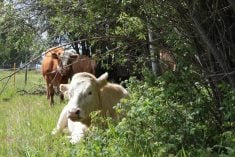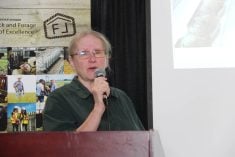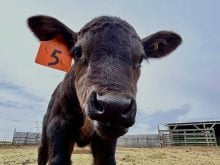In rural Western Canada, the veterinary clinic was traditionally a mixed-animal practice, with everyone being a jack of all trades and emergency work in all species. But cattle were the bread and butter.
We have all heard of the shortage of veterinarians for both small and large animals, but there has also been a big change in clinics and in what veterinarians do within them.
Today’s cattle producer has also changed and with it the services required. Many are using embryo transfer and semen collection and require detailed herd health work, including analyzing records and data for conception rates, carcass data and genetic information.
Read Also

Gentle treatments for pain in the neck
Heading toward year-end, people unknowingly tense up against the cold and busyness, causing neck pain that can often be treated with appropriate support and gentle mobility, athletic therapist Kathlyn Hossack says.
In larger clinics, one veterinarian may be the reproductive expert, another may focus on something such as lameness, another on calf health and drafting vaccination and other herd health protocols. There may be one who even takes more of an interest in surgery, pathology or toxicology.
There is lots of work to go around, so I find more clinics in the same area get along and share expertise and often will share emergency calls. There is more synchronized breeding so veterinarians may also work co-operatively with insemination technicians or other reproductive specialists and nutritionists. The health and productivity results of the herd often require many professionals working together. This may include all the good work the veterinary technicians do at the clinics.
We are fortunate in cattle practice that very good bull and heifer selection over the years has resulted in tremendous growth with a minimum of calving problems. Efficiencies such as feed conversion have been improving and carcass weight has been rising, so yield is also improving. We are all pushing the needle higher.
Calving problems and other emergencies are on the decrease, but covering them remains necessary throughout the year. Most large and mixed practices have an on-call system and this usually sees them sharing it with surrounding clinics, when possible, if the clinics get along.
Over time, some larger clinics have developed reproductive services including embryo transfer, pregnancy checking, semen evaluation and herd health services. These clinics cover larger and larger areas.
What’s good, from a client service perspective, is if those clinics also have facilities for hauling in livestock, to accommodate individual animal medicine, emergency and regulatory services.
Tasks from a few semen evaluations or castrations to a few pregnancy checks or egg implants are all within the scope of these multi-purpose clinics with good facilities.
There is no doubt that producer facilities have also improved, with hydraulic chutes and tub and alley systems, so herd work can be accomplished worry-free, with much less stress on both the animals and their human handlers.
There is no doubt veterinarians want to do the herd work on the farm, as it reduces animal stress and transportation costs. Also, in disease investigations, we learn much more by being on site.
Service with less miles
Another change is the use of pictures and videos, which enable use of telemedicine. This has been done, in one regard, for many years, with digital photos of autopsies being put before a veterinarian in an office for a diagnosis. This is the same thing that happens with digital X-rays in the medical profession. Larger clinics will often have semi-specialists within them as well. This may take the form of a special interest or surgical skill a veterinarian has.
Your goal is to find the clinic that has the best fit for your operation. Many producers, especially those involved in purebred cattle and embryo transfer, will use a different veterinarian (in the same clinic or a different clinic) for that work. Try the young veterinarians at the clinic you use.
The new generation are primarily women and they have bright minds, a real grasp of animal welfare and super attention to detail, so don’t be afraid to make use of them.
I always recommend, when making an appointment, to suggest two veterinarians. With holidays and work schedules you may not always get your first choice.
Veterinarians will use their ‘A’ clients first, if they’re exploring the idea of telemedicine. Discuss the specific cases for which you have a hard time reaching anyone or the time for booking is too long. A telemedicine exam and follow-up may be the place to start.
Vet medicine for livestock production has changed over the years but much is still based on the one-on-one relationship you have with the veterinarian or veterinary clinic. Use this, and work with the veterinary profession to help address the shortage it faces.















